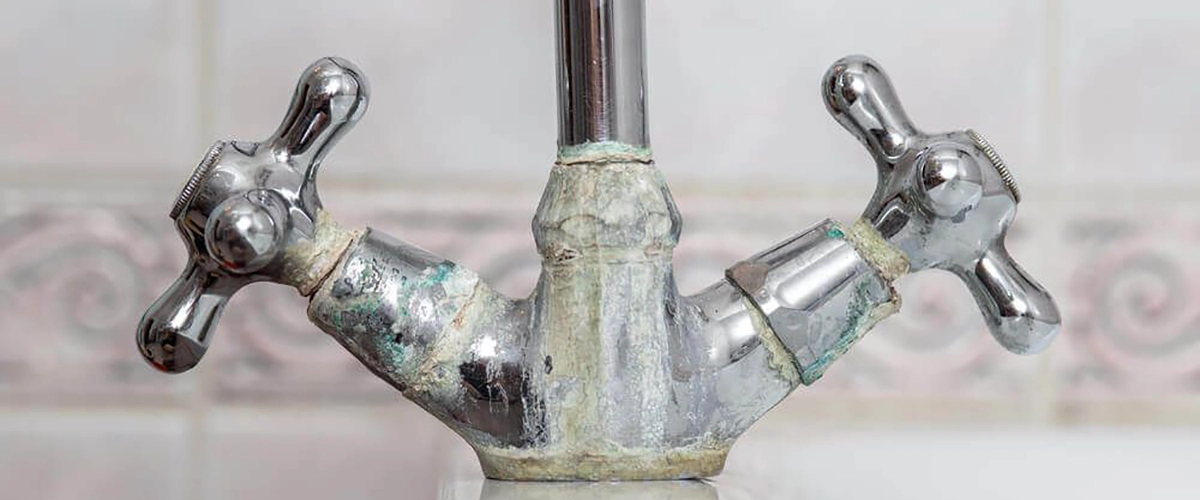Limescale, an unwelcome byproduct of hard water, can mar the appearance of household surfaces and compromise the efficiency of appliances. This comprehensive guide aims to delve deeper into the intricacies of limescale, shedding light on its composition, impact, and providing an extensive roadmap for effective prevention and removal. By understanding the nature of limescale and implementing a combination of proactive measures and cleaning strategies, you can maintain a pristine living space free from the clutches of this persistent mineral deposit.
Understanding Limescale:
Limescale, scientifically known as calcium carbonate, appears as chalky, off-white deposits on surfaces regularly exposed to hard water.
Its formation is rooted in the minerals found in hard water, particularly calcium and magnesium ions, which precipitate out as the water evaporates.
The Impact of Limescale:
Beyond its aesthetic implications, limescale poses a significant threat to household appliances. It accumulates on faucets, showerheads, and kitchen appliances, diminishing their efficiency and potentially shortening their lifespan.
Furthermore, limescale can interfere with the effectiveness of cleaning agents, affecting the taste of water in appliances such as kettles.
Preventive Measures:
a. Water Softeners: Install water softeners to alleviate the hardness of water by removing calcium and magnesium ions, preventing the formation of limescale.
b. Descaling Agents: Regularly incorporate descaling agents into your cleaning routine, especially for appliances prone to limescale buildup, such as kettles and coffee makers.
c. Filtered Water: Consider using filtered water for appliances and drinking to minimize mineral content, reducing the likelihood of limescale formation.
Homemade Remedies:
In addition to commercially available descaling agents, explore natural solutions like vinegar and lemon juice.
These mild acids are effective in breaking down limescale deposits without causing damage to surfaces, providing an eco-friendly and budget-friendly alternative.
Routine Cleaning Tips:
Establishing a regular cleaning routine is crucial for preventing limescale buildup. Wipe down surfaces consistently and use appropriate cleaning agents to keep fixtures and appliances limescale-free.
Consistent cleaning not only preserves the appearance of surfaces but also ensures their longevity.
Choosing Limescale-Resistant Appliances:
When investing in new appliances, prioritize those designed with limescale-resistant features. Manufacturers often utilize materials that discourage the formation of mineral deposits, thereby extending the lifespan and efficiency of the appliances.
Regular Maintenance:
Routine maintenance is paramount to preventing limescale-related issues. Adhere to manufacturer guidelines for water-based appliances, including flushing out water heaters and descaling showerheads.
Regular checks and cleaning contribute significantly to keeping limescale at bay.
FAQs:
Q1: Can limescale be harmful to health?
A: Limescale itself is not harmful, but it can create an environment where bacteria may thrive. Regular cleaning and maintenance can prevent this.
Q2: How does hard water contribute to limescale buildup?
A: Hard water, rich in minerals like calcium and magnesium, leaves behind limescale deposits as it evaporates.
Q3: Are there eco-friendly ways to prevent limescale?
A: Yes, using natural remedies like vinegar and lemon juice provides an eco-friendly approach to preventing and removing limescale.
Q4: Can limescale damage appliances?
A: Yes, limescale can reduce the efficiency and lifespan of appliances, such as water heaters and kettles.
Q5: Is it safe to use descaling agents?
A: Yes, when used as directed, descaling agents are generally safe and effective in removing limescale.
Conclusion:
In conclusion, preventing and removing limescale demands a comprehensive strategy that combines proactive measures, regular maintenance, and the use of appropriate cleaning agents. By adopting these strategies, you can safeguard your household surfaces and appliances from the persistent grip of limescale, ensuring a cleaner environment and the prolonged efficiency of your appliances. A concerted effort towards prevention and removal will undoubtedly contribute to a more comfortable and aesthetically pleasing living space.

A group of home improvement enthusiasts and bathroom design experts, combines in-depth knowledge and a shared passion to deliver engaging, informative content that guides readers through the world of bathroom innovation and style.

Leave a Reply